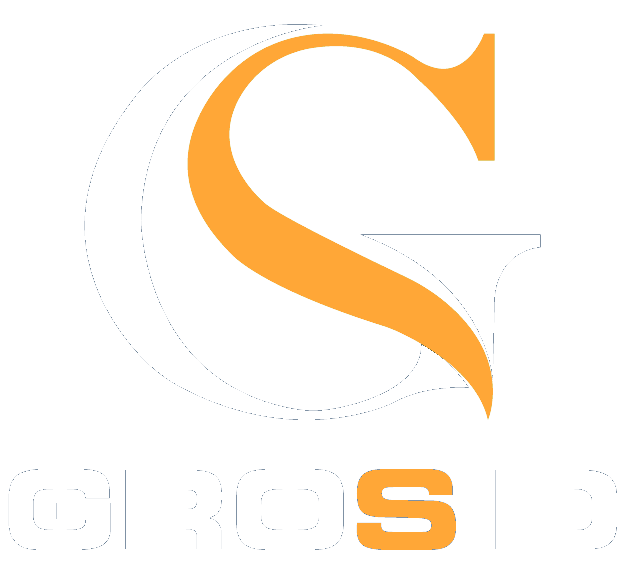1. Introduction: The Role of Symbols of Mortality in Human Culture
Throughout human history, symbols of mortality—images and motifs associated with death—have played a profound role in shaping cultural practices, religious beliefs, and personal identities. These symbols, ranging from skulls and skeletons to mythic creatures, serve as visual reminders of life’s transient nature and often act as tools for reflection, caution, or even protection.
The enduring fascination with death stems from a universal curiosity and fear, intertwined with hope for transcendence and protection. Today, these symbols continue to evolve, appearing in modern fashion, art, and even security measures. This article explores how symbols of mortality function as protective elements in contemporary society, bridging ancient traditions with modern interpretations.
Table of Contents
- 2. The Concept of Mortality Symbols as Protective Symbols
- 3. Historical and Mythological Foundations of Mortality Symbols
- 4. Modern Interpretations and Uses of Mortality Symbols
- 5. Case Study: Rise of Orpheus as a Modern Symbol of Mortality and Transformation
- 6. Non-Obvious Perspectives: The Psychological Power of Mortality Symbols
- 7. Can Symbols of Mortality Provide Real Protection Today?
- 8. The Evolution of Mortality Symbols: From Fear to Empowerment
- 9. Conclusion: The Continuing Significance of Mortality Symbols in Our Lives
2. The Concept of Mortality Symbols as Protective Symbols
Symbols related to mortality function both as reminders of life’s impermanence and as protective talismans. They serve to keep death’s reality at bay by confronting it directly, which paradoxically can foster a sense of control and resilience. For example, skull motifs in tattoos or jewelry often symbolize acceptance of death, which can diminish fear and foster psychological strength.
Culturally, these symbols operate on multiple levels. They act as warnings, as spiritual shields, and as affirmations of mortality’s inevitability, thus empowering individuals to live more consciously and courageously. The paradox lies in using representations of death—initially associated with fear—to generate feelings of safety and resilience.
Psychological and Cultural Functions
- Reminders of mortality: Encouraging mindfulness and appreciation for life.
- Protection through symbolism: Believed to ward off evil or misfortune, as seen with protective amulets adorned with skulls or death imagery.
- Resilience and acceptance: Reducing anxiety about death by normalizing it through familiar symbols.
3. Historical and Mythological Foundations of Mortality Symbols
Ancient Greek Examples: Cerberus and Skulls in Art
Ancient Greece offers rich examples of mortality symbolism intertwined with mythology. The three-headed dog Cerberus, guardian of the underworld, symbolized the boundary between life and death, serving as a protector of the dead’s realm. Its fierce presence was believed to ward off evil spirits and ensure safe passage to the afterlife.
Skulls frequently appeared in Greek pottery and sculpture, often as memento mori—reminders that death is inevitable. These symbols reinforced societal values of mortality awareness, encouraging individuals to live virtuously in the face of life’s fleeting nature.
Transition from Ancient to Modern Symbols
Over centuries, symbols like skulls and mythic creatures have persisted, transforming in meaning but maintaining their protective essence. Modern adaptations include jewelry, tattoos, and fashion accessories that draw on these ancient motifs, repurposing them as expressions of personal resilience or cultural identity.
4. Modern Interpretations and Uses of Mortality Symbols
Fashion, Tattoos, and Art
Today, mortality symbols adorn clothing, jewelry, and tattoos, serving as personal talismans. For instance, skull tattoos are often chosen not just for their aesthetic appeal but to symbolize strength, protection, and acceptance of mortality. These images can act as shields against despair or fear, grounding individuals in their mortality while empowering them.
Security and Safety Applications
In security contexts, symbols of death and danger—such as biohazard signs or warning skulls—are used to deter intrusion or signal hazards. These symbols leverage primal fears to protect environments, showcasing how mortality imagery can serve functional protective roles beyond personal symbolism.
Cultural Adaptations
Different societies incorporate mortality symbols into their rituals and art. For example, the Mexican Día de los Muertos celebrates death with skull motifs, transforming mourning into a cultural expression of remembrance and protection. Such adaptations highlight the universal human tendency to redefine death symbols as sources of community resilience and personal strength.
5. Case Study: Rise of Orpheus as a Modern Symbol of Mortality and Transformation
The Myth of Orpheus and Its Themes of Death and Rebirth
Orpheus, the legendary Greek musician, whose story revolves around descending into the underworld to retrieve his beloved Eurydice, embodies the themes of mortality, loss, and eventual rebirth. His journey symbolizes confronting death directly and emerging transformed—a powerful analogy for resilience and renewal.
Contemporary Reframing of Orpheus’s Story
Modern narratives reframe Orpheus as a symbol of overcoming despair and embracing transformation. Media and art explore his myth as an allegory for personal resilience, turning death from a final end into a catalyst for growth. This reinterpretation aligns with current tendencies to see mortality symbols as sources of empowerment.
Modern Protection and Resilience Narratives
Websites like RISE-OF-ORPHEUS exemplify how ancient myths are repurposed into symbols of strength and renewal. Orpheus’s story is now used to inspire resilience in the face of adversity, illustrating how mortality and transformation can serve as protective principles in personal development.
6. Non-Obvious Perspectives: The Psychological Power of Mortality Symbols
Influence on Subconscious Fears and Defenses
Research indicates that symbols of mortality can influence subconscious fears, helping individuals confront and integrate these fears rather than repress them. For example, tattooing a skull may serve as a symbolic act of mastery over death’s anxiety, fostering psychological resilience.
Fostering Resilience and Acceptance
Psychological practices and cultural rituals that incorporate mortality symbols encourage acceptance of mortality, which in turn reduces anxiety and cultivates a sense of inner strength. Recognizing death as a natural part of life can lead to greater resilience and emotional stability.
Examples from Studies and Practices
Studies show that exposure to death symbols in controlled settings can desensitize fears and promote acceptance. Cultural practices like the Mexican Día de los Muertos or Buddhist rituals exemplify how mortality symbols are harnessed to foster psychological resilience.
7. Can Symbols of Mortality Provide Real Protection Today?
Psychological Versus Practical Roles
While symbols of mortality primarily serve psychological functions—such as fostering resilience and acceptance—they can also have practical protective roles. For instance, warning signs with skull imagery deter unsafe behavior in hazardous environments, leveraging primal fears to promote safety.
Limits and Potentials of Symbolic Protection
Despite their power, symbols alone cannot prevent physical harm; their effectiveness depends on contextual and cultural factors. However, they can significantly influence perceptions and behaviors, creating a psychological shield that enhances overall safety.
Ethical Considerations
Using death symbols for protection must be approached with sensitivity. Overuse or misappropriation can lead to trivialization or fear-mongering, undermining their protective potential. Respectful, culturally informed application is essential for meaningful impact.
8. The Evolution of Mortality Symbols: From Fear to Empowerment
Historical Shifts in Perception
Historically, death symbols were associated with fear and taboo. Over time, their interpretation has shifted toward themes of empowerment and acceptance, especially in art and popular culture. This shift reflects a broader understanding of mortality as a natural, even inspiring, aspect of human life.
Modern Reinterpretations and Empowerment
Contemporary uses of mortality symbols aim to foster resilience rather than fear. Tattoos of skulls, for example, are often chosen to symbolize strength and overcoming adversity, transforming symbols of death into emblems of personal empowerment. The myth of Orpheus, as a symbol of rebirth, exemplifies this transformation.
Future Trends
As society continues to evolve, mortality symbols may increasingly serve as tools for empowerment, mental health resilience, and spiritual growth. Their reinterpretation aligns with a broader cultural movement toward accepting mortality as part of a meaningful life journey.
9. Conclusion: The Continuing Significance of Mortality Symbols in Our Lives
Symbols of mortality are multifaceted; they serve as reminders, protective talismans, and sources of empowerment. From ancient Greek mythologies to modern tattoos and safety signs, these symbols bridge our fears and resilience, helping us confront death in ways that can foster strength and acceptance.
“Confronting death through symbols transforms fear into resilience, turning ancient motifs into modern shields.”
While symbols alone cannot guarantee physical protection, their psychological influence is undeniable. As society continues to reinterpret these symbols—like the inspiring stories behind RISE-OF-ORPHEUS—they affirm the enduring human capacity to find strength in the face of mortality, fostering a deeper understanding of life and death.

